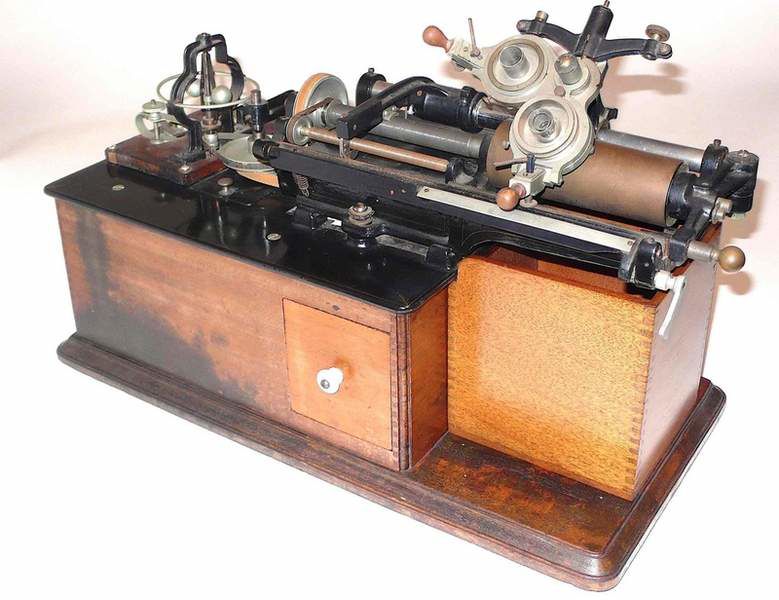Restored Edison recordings revive 19th-century Germany
Published 4:00 am Tuesday, January 31, 2012

- Thomas Edison's phonograph. Tucked away for decades in a cabinet in Edison's laboratory, a trove of wax cylinder phonograph records has been brought back to life after more than a century of silence.
Tucked away for decades in a cabinet in Thomas Edison’s laboratory, just behind the cot in which the great inventor napped, a trove of wax cylinder phonograph records has been brought back to life after more than a century of silence.
The cylinders, from 1889 and 1890, include the only known recording of the voice of the powerful chancellor Otto von Bismarck. Two preserve the voice of Helmuth von Moltke, a venerable German military strategist, reciting lines from Shakespeare and from Goethe’s “Faust” into a phonograph horn. (Moltke was 89 when he made the recordings — the only ones known to survive from someone born as early as 1800.)
Other records found in the collection hold musical treasures — lieder and rhapsodies performed by German and Hungarian singers and pianists at the apex of the Romantic era, including what is thought to be the first recording of a work by Chopin.
Officials at Edison’s old laboratory in West Orange, N.J., now Thomas Edison National Historical Park, unveiled the newly identified recordings Monday.
“This is sensational,” said Ulrich Lappenkueper, director of the Otto von Bismarck Foundation in Friedrichsruh, Germany. The Bismarck cylinder is documented in the foundation’s archive, but after searching for it in the United States and Germany since 2005, Lappenkueper and his colleagues assumed it had been lost forever.
The unlabeled recordings, all housed in the same wooden box, had been found in 1957. But their contents remained unknown until last year, when Jerry Fabris, the curator at the Edison laboratory, used a playback device called the Archeophone to trace the grooves of 12 of the 17 cylinders in the box and convert the analog electrical signals into broadcast WAV files.
He then enlisted two sound historians, Patrick Feaster of Indiana University and Stephan Puille of the University of Applied Sciences in Berlin, to help identify the faint recordings.
The lid of the box held an important clue. It had been scratched with the words “Wangemann. Edison.”
The first name refers to Adelbert Theodor Edward Wangemann, who joined the laboratory in 1888, assigned to transform Edison’s newly perfected wax cylinder phonograph into a marketable device for listening to music. Wangemann became expert in such strategies as positioning musicians around the recording horn in a way to maximize sound quality.
In June 1889, Edison sent Wangemann to Europe, initially to ensure that the phonograph at the Paris World’s Fair remained in working order. After Paris, Wangemann toured his native Germany, recording musical artists and often visiting the homes of prominent members of society who were fascinated with the talking machine.
Until now, the only available recording from Wangemann’s trip to Europe has been a well-known and well-worn cylinder of Brahms playing an excerpt from his first Hungarian Dance. That recording is so damaged “that many listeners can scarcely discern the sound of a piano, which has in turn tarnished the reputations of both Wangemann and the Edison phonograph of the late 1880s,” Feaster said. “These newly unearthed examples vindicate both.”
In October 1889 Wangemann and his wife visited Bismarck, then 74 and the chancellor of the German empire, at his castle in Friedrichsruh. Bismarck listened to recordings made in Paris and Berlin, and at his wife’s urging, he made his own. He recited snippets of poetry and songs in English, Latin, French and German. Perhaps surprisingly, given his involvement in the Franco-Prussian War, he chose to recite lines from the French national anthem.
“Bismarck was a very, very witty man” and reciting the Marseillaise “would tickle him,” said Jonathan Steinberg, a historian at the University of Pennsylvania and the author of the new biography “Bismarck: A Life.”
The panoply of musical artists on the cylinders “represented the prominent musicians of the day,” said Jonathan Berger, a musicologist at Stanford.
“The fact that their musical lineage and circle of friends included the great composers of the 19th century makes their recordings valuable documents of performance practices and musical sensibilities of the time,” he added.
The Wangemann cylinders are just the latest in an explosion of discoveries in early recorded sound over the past five years, said Tim Brooks, a sound historian in Greenwich, Conn. In 2008, Feaster and his colleagues at FirstSounds.org succeeded in playing a version of the French lullaby “Au Clair de la Lune,” deciphered from a tracing in soot-coated paper dating from 1860 — the earliest sound ever recovered. A trove of cylinders recorded in Russia in the 1890s was also recently uncovered.
The ability to digitize old recordings and the use of new imaging techniques to map the grooves of damaged cylinder records without touching them has contributed to the onslaught, Brooks said, adding, “You can actually hear history as well as read about it.”





